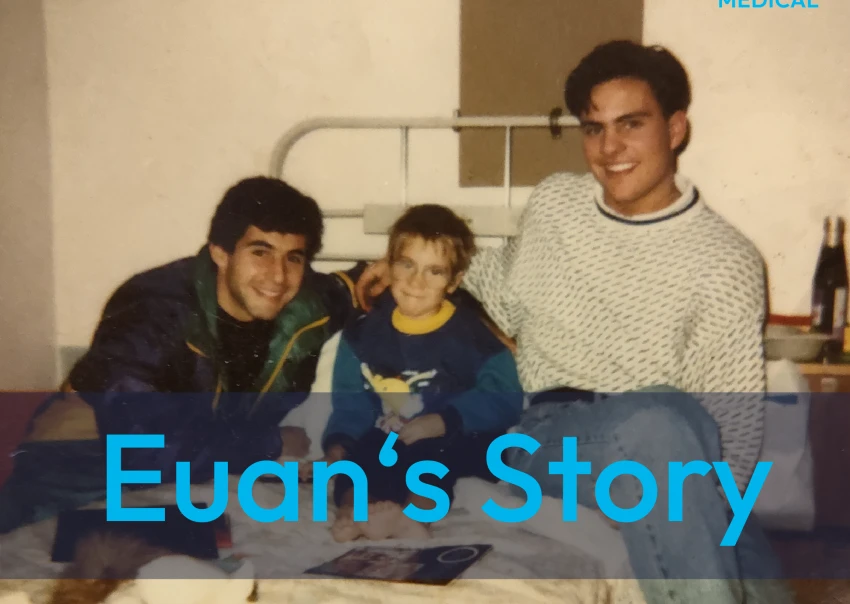
How I Became an Orthotist
I often get asked, "How did you get into orthotics?" or "What made you want to be an orthotist?"—whether by my peers, friends or my patients.
The short answer? I wanted to work in a hospital, wear a tie, and make a mess.
Sounds like an odd response, right? But let me explain.
I was born three months premature and had intracranial bleeding, which led to a diagnosis of Cerebral Palsy. This primarily affected my lower limbs and mobility. Fortunately, I had a fantastic physio, a talented (but slightly aloof) orthopaedic consultant, and, of course, an orthotist.
I still remember my first visit to the old Ashington Hospital at age five. I can picture the consultant's rooms, the distinct hospital smell, and the consultant himself—dictating into a recorder while sporting a distinctive dicky bow tie. (Everyone who knows me can tell you that I’ve always been a fan of ties. As a child, I thought that’s how people ranked their importance!)
Then there was the physio – always literally, pulling at my legs, making me do stretches I didn’t want to do. If only I had listened to the physio!
With all the leg pulling, X-rays, and medical talk, it was finally time to meet the orthotist.
Here’s what I remember:
He didn’t work in an office or sit behind a desk—he worked (or lived, it seemed) in the plaster room. ( To this day, I love the plaster room)
He carried a briefcase full of tools and equipment.
He dressed smartly in a shirt and tie, but he was making a complete mess—plaster everywhere, moulding, shaping, and drawing on people's legs.
What a strange job, I thought. But he looked like he was having fun.
That’s when I decided: I wanted to be an orthotist.
A few weeks later, I returned to get my splint fitted. I won’t pretend I was the perfect patient—I didn’t wear it all the time. Truthfully, I felt like it slowed me down, kept me from running around the playground. But I knew I had to wear it… because that chap in the plaster room made it for me.
Of course, my brilliant physio had to coax me into wearing it:
"Euan, you need to wear it to get your heel down, or you might have to see the chap with the bow tie for an operation."
Well, the inevitable happened—I had a tendon Achilles lengthening and a tendon transfer on my right foot.
BOOM. My heels were down. Nothing stopping me now!
Even better, while I was in hospital, I got to meet the Newcastle United football team—lifelong fan ever since. Howay the lads!
After my first operation, I had to wear an AFO to maintain my range of motion. My physio would visit me at school—not to check if I was causing a ruckus (not much has changed there!) but to make sure I was using the orthotist’s latest creation properly.
But little did I know—the fun had only just started. I would continue seeing my brilliant physio and that chap from the plaster room up until I was 16.
Coming Full Circle
I don’t tend to harp on about having Cerebral Palsy—I generally forget about it. And when I do get the honest observation from a patient:
"What’s wrong with your leg, mate?"
My response is always:
"This appointment is about you, not me. Let’s see how I can help."
But it would be naïve to think that my life experience hasn’t impacted my job in a positive way. I know what it’s like to wear a brace, to have muscle cramps, to feel fatigued, and to wake up in the night when the weather’s cold. I know how important it is to actually listen to advice—doing your stretches, taking five-minute rest breaks when you need them.
It’s always funny to reflect on how things have come full circle and how the passion of those treating me as a child has transferred to my life as a Senior Orthotist at Peacocks Medical Group, and as a person.
In Short:
I was once a patient at Peacocks.
I did my student clinical practice with the company.
Now, I work in partnership with Northumbria Trust and have the pleasure of working at Wansbeck Hospital.




